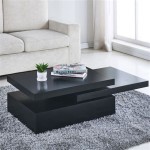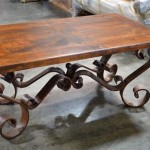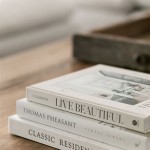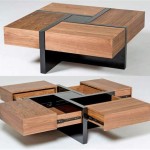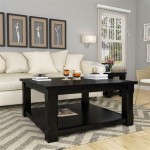How To Paint a Coffee Table Rustic: A Comprehensive Guide
Rustic furniture, with its charmingly weathered appearance and inherent imperfections, adds character and warmth to any living space. Transforming an existing coffee table into a rustic masterpiece is a rewarding DIY project achievable with the right techniques and materials. This article provides a detailed guide on painting a coffee table to achieve a rustic aesthetic, covering preparation, painting methods, and finishing touches.
Preparation is Paramount
The success of any painting project hinges on thorough preparation. Neglecting this step can result in a subpar finish that fails to capture the desired rustic charm. The following steps outline the essential preparation tasks for painting a coffee table rustic.
Cleaning the Surface: Begin by meticulously cleaning the coffee table's surface. Remove any dust, dirt, grime, or existing coatings using a degreaser or a mixture of warm water and mild detergent. For stubborn residues, a scrub brush or a sponge can be used. Ensure the table is completely dry before proceeding to the next step.
Sanding the Surface: Sanding is a crucial step for creating a receptive surface for the paint. The type of sandpaper required depends on the existing finish. If the table has a glossy finish, start with a medium-grit sandpaper (around 120-grit) to dull the shine. For surfaces with minor imperfections or existing paint, a finer-grit sandpaper (around 220-grit) is suitable. Sand in the direction of the wood grain, applying even pressure to avoid creating unevenness. After sanding, remove the sanding dust with a tack cloth or a damp cloth.
Repairing Imperfections: Rustic furniture embraces imperfections, but significant damage or structural issues should be addressed. Fill any holes, cracks, or dents with wood filler, following the manufacturer's instructions. Allow the filler to dry completely and then sand it smooth to blend with the surrounding surface. For damaged veneer, consider carefully removing and replacing the affected section or incorporating the damage into the rustic aesthetic by distressing it further.
Priming the Surface (Optional): Priming is not always necessary, but it can be beneficial in certain situations. If the coffee table is made of raw wood, or if the existing finish is dark and likely to bleed through the new paint, applying a primer is recommended. Choose a primer appropriate for the type of paint being used. Apply the primer in thin, even coats, allowing it to dry completely before proceeding to the painting stage.
Masking and Protection: Protect areas that should not be painted, such as hardware, legs, or decorative elements, with painter's tape. Cover the surrounding work area with drop cloths or plastic sheeting to prevent paint spills and splatters.
Painting Techniques for a Rustic Finish
Several painting techniques can be employed to achieve a rustic aesthetic. The choice depends on the desired level of distressing and the overall look one aims to achieve. This section explores some popular methods for painting a coffee table rustic.
Dry Brushing: Dry brushing is a technique where a minimal amount of paint is applied to a brush, which is then lightly dragged across the surface. This creates a textured, weathered look by allowing the base coat to show through. To dry brush, dip the tip of the brush into the paint, then wipe off most of the paint onto a paper towel. Apply the paint in short, irregular strokes, focusing on edges and areas that would naturally experience wear and tear. Experiment with different colors and brush pressures to achieve the desired effect.
Layering Colors: Layering different colors of paint can add depth and dimension to the rustic finish. Start with a base coat in a color that complements the overall aesthetic. Once the base coat is dry, apply a second coat in a contrasting color. Before the second coat dries completely, use a damp cloth or sponge to gently wipe away some of the paint in certain areas, revealing the base coat underneath. This technique creates a worn and aged appearance.
Chalk Paint and Wax: Chalk paint is a popular choice for rustic furniture due to its matte finish and ease of distressing. Apply chalk paint in thin, even coats, allowing each coat to dry completely before applying the next. Once the paint is dry, use sandpaper to distress the surface, focusing on edges, corners, and areas that would naturally experience wear. After distressing, apply a wax finish to protect the paint and enhance the rustic look. Use a brush or cloth to apply the wax, then buff it with a clean cloth to create a smooth, polished surface.
Milk Paint: Milk paint offers a uniquely aged and weathered look. It is a powdered paint that is mixed with water before application. Milk paint can chip and crack naturally, adding to the rustic charm. For a more controlled chippy effect, apply a bonding agent before the first coat of milk paint. Sanding can also be used to achieve the desired distressed look after the paint dries. A topcoat is necessary to protect milk paint.
Creating Texture: Adding texture to the paint surface can significantly enhance the rustic look. This can be achieved through various methods, such as using a textured paint roller, applying a faux finish technique with a sponge or rag, or incorporating elements like sand or sawdust into the paint. Experiment with different techniques to find the one that best suits the desired aesthetic.
Consider Stain Blocking Primer: Especially with older wood, tannins can bleed through the paint and create unwanted discoloration. Using a stain-blocking primer as the first coat can prevent this issue.
Distressing and Finishing Touches
Distressing is the art of intentionally creating imperfections to give the coffee table a weathered and aged appearance. This is a critical step in achieving a truly authentic rustic finish. After painting using the chosen method, consider the following distressing techniques.
Sanding: Sanding is the most common and versatile distressing technique. Use sandpaper to strategically remove paint from edges, corners, and areas that would naturally experience wear and tear. Vary the pressure and angle of the sandpaper to create a more natural look. Start with a medium-grit sandpaper and then switch to a finer-grit sandpaper to smooth out the edges.
Chipping: Creating small chips and cracks in the paint can add to the rustic character. This can be achieved by gently tapping the surface with a hammer or screwdriver, or by using a scraper to carefully remove small pieces of paint. Avoid creating large, unnatural-looking chips. The goal is to simulate the effects of age and wear.
Dark Wax or Glaze: Applying a dark wax or glaze can enhance the distressed look and add depth to the finish. Apply the wax or glaze with a brush or cloth, then wipe away the excess with a clean cloth. The dark wax or glaze will settle into the crevices and imperfections, accentuating the distressed details. Buff the surface with a clean cloth to create a smooth, polished finish.
Adding Hardware: Replacing existing hardware with rustic or vintage-style hardware can further enhance the rustic aesthetic. Consider using knobs, pulls, or hinges made of wrought iron, brass, or aged metal. Ensure the hardware complements the overall style and color of the coffee table.
Sealing the Finish: To protect the painted surface and ensure its longevity, apply a sealant. A clear matte varnish or polyurethane is a good choice for protecting the paint while maintaining the rustic look. Apply the sealant in thin, even coats, allowing each coat to dry completely before applying the next. Follow the manufacturer's instructions for application and drying times. For chalk paint, wax is traditionally used. Reapply wax as needed over time.
Embellishments: Consider adding subtle embellishments that complement the rustic style. Stencils, wood appliques, or even carefully placed nail heads can add visual interest and character.
By following these guidelines, individuals can confidently transform an ordinary coffee table into a stunning rustic centerpiece, adding charm and character to any living space. The key is to embrace imperfections, experiment with different techniques, and allow creativity to guide the process.

Diy Painting Aging Techniques For Living Room Coffee Tables My Desired Home Shabby Chic Table Painted Distressed

Distressed Coffee Table A Revisit Rework The Painted Hive

How To Whitewash Distress Furniture Diy Farmhouse Coffee Table Simply Taralynn Food Lifestyle Blog

How To Paint Your Coffee Table Notice The Little Things

Farmhouse Coffee Table Makeover

Coffee Table Makeover Part One Painted Tables Furniture

Diy World Market Coffee Table Makeover Liz Marie Blog

The Boho Coffee Table Milk Paint Experiment I Re Stuff

Coffee Table Makeover Man Cave Furniture With Rust Paint Do Dodson Designs

Thrift Coffee Table Make Over With Chalk Paint Rustic Farmhouse Refurbished Furniture Renovation Recycled
Related Posts

